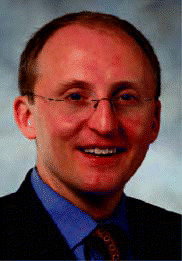F. Christopher Holsinger, MD, FACS, is Assistant Professor and Attending Surgeon in the Department of Head and Neck Surgery at The University of Texas M.D. Anderson Cancer Center in Houston.
Explore This Issue
December 2006For years, radical surgery was the only treatment for head and neck cancer (HNSCC). For intermediate and even early-stage disease, there were few surgical options that could achieve reproducible oncologic and functional results, especially for patients with laryngopharyngeal cancer. For instance, the indications for time-honored approaches in conservation surgery were limited: the supraglottic horizontal laryngectomy (SGL) and vertical partial laryngectomy (VPL) were excellent operations, but narrow selection criteria confined these procedures to infrequent use. As a result, radically ablative surgical approaches were more commonly used when optimal local and regional control was the goal.
Yet, in the 1980s, management of the neck was evolving, and the modified radical dissection, followed later by the selective cervical lymphadenectomy, became accepted oncologic yet function-sparing procedures. But there were no coincident evolution and few innovations for the management of the primary tumor. Bigger was still better when it came to managing the primary tumor. Microvascular reconstruction permitted larger and more generous resections. But despite large resections and their mutilating sequelae, postoperative radiation therapy was still needed for optimal local and regional control. This endgame in surgery may have perhaps led to a search for better options for patients with head and neck cancer.
In 1991, the Department of Veterans Affairs Laryngeal Cancer Study demonstrated equivalence in overall survival between patients treated with total laryngectomy with postoperative radiation therapy compared with patients treated with induction chemotherapy and radiation.1 Since this landmark study, primary nonsurgical treament has assumed a greater role in the treatment of patients with head and neck cancer. With the advent of improvements in radiotherapy (RT) such as intensity-modulated RT and the advent of concurrent chemotherapy with radiation, more treatment options are available to patients. In 2003, with the publication of the RTOG 91-11 study,2 the standard treatment for intermediate to advanced stage laryngeal cancer became concurrent chemotherapy with radiation therapy (cRT). By then, the paradigm had changed and the cRT approach was routinely used for all subsites within the head and neck. With a few exceptions, the head and neck surgeon became predominantly a salvage surgeon, managing cancer in the oral cavity and the neck. Applications to training programs in head and neck surgical oncology plummeted to an all-time low.
As otolaryngologists-head and neck surgeons, we manage the long-term sequelae of patients with HNSCC, whether treated with surgery, radiation alone, or concurrent chemoradiation. With aggressive cRT approaches, some patients perform remarkably well, with excellent oncological results and functional sequelae limited to xerostomia and mild dysphagia. Inexplicably, others do much worse. While avoiding the mutilating sequelae of radical surgical approaches, these combined cRT approaches for organ preservation can be associated with extensive morbidity, leading to adverse functional speech and swallowing outcomes. At least an important minority of patients treated with cRT end up with a preserved anatomic organ, but with significant functional compromise, necessitating tracheotomy and/or gastrostomy. Worse still, for those patients treated with cRT who later require salvage total laryngectomy, postoperative complications are increased but survival is significantly diminished.3

Leave a Reply